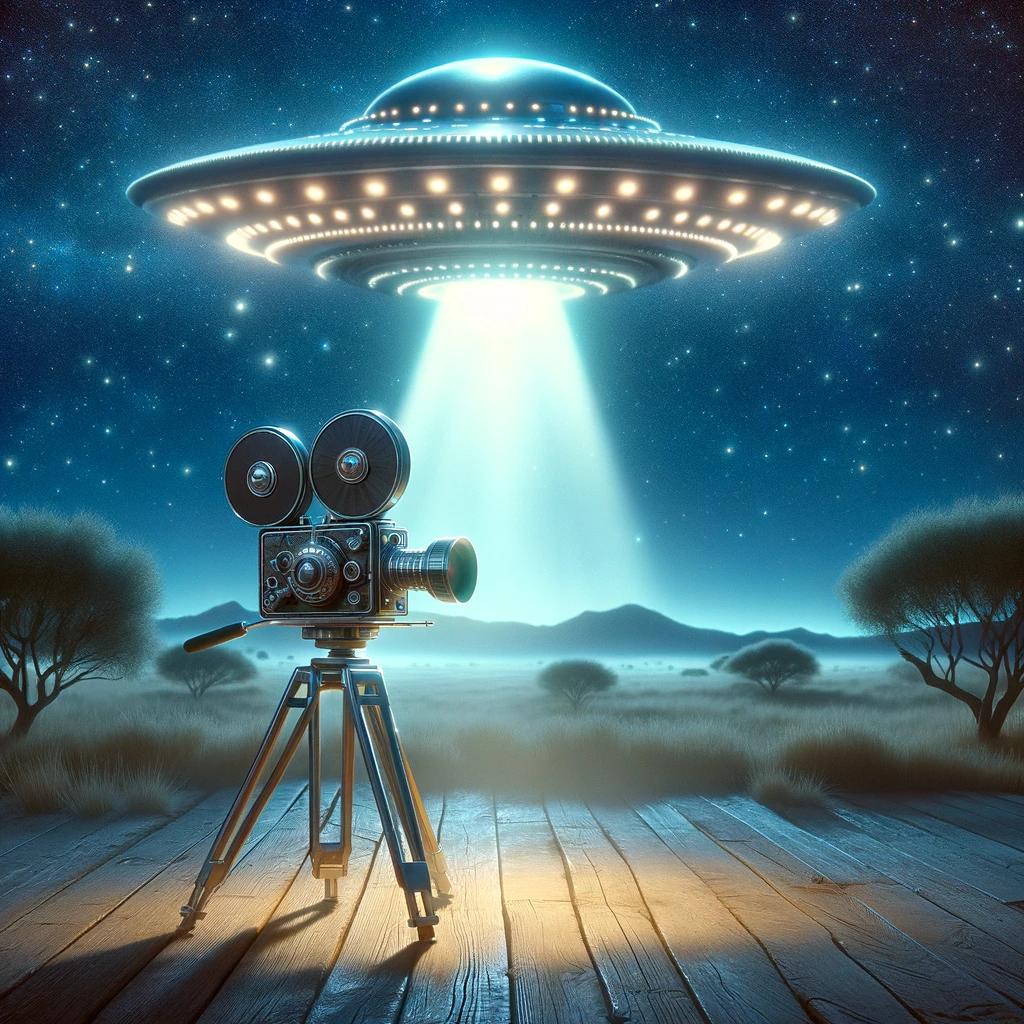UFO’s Are Real (1979)

“UFO’s Are Real” (1979) is a seminal documentary from the 1970s, known for its comprehensive exploration of Unidentified Flying Objects (UFOs) through a combination of still and motion pictures, government documents, and eyewitness accounts. Narrated by Brandon Chase, the documentary features prominent figures such as Stanton Friedman, Jesse Marcel, and Betty Hill, among others, looking into several key UFO incidents and phenomena.
The film opens with a discussion on a 1961 secret meeting of government-sponsored astronomers, estimating the existence of millions of intelligent extraterrestrial civilizations within our galaxy. This premise sets the stage for the documentary’s exploration of UFOs, suggesting a vast, populated universe where Earth might be a point of interest for otherworldly visitors.
One of the highlighted cases is a sighting by Leland Hansen, a professional photographer working for the U.S. Navy, who captured a UFO on film while filming Catalina Island. Photographic analysis suggested the object was a 30-foot diameter craft, moving between 130 and 170 miles per hour without visible means of propulsion. This case, like others presented in the documentary, is used to argue for the physical reality of UFOs and their advanced technology beyond human capabilities.
The documentary also looks into government involvement, revealing classified documents that suggest a longstanding awareness and concealment of UFO phenomena by authorities. One example is a letter from astronaut Gordon Cooper to the United Nations, expressing his conviction in the extraterrestrial origin of some UFOs based on his personal experiences.
Significant UFO sightings by astronauts, such as James McDivitt and Gordon Cooper, are recounted, lending credibility to the documentary’s claims given their professional backgrounds. These accounts are complemented by civilian sightings and encounters, including the famous cases of the Hill Abduction and the Walton Abduction, which involve detailed narratives of human interactions with alien beings and spacecraft.
The film also presents physical trace cases, such as landing sites with altered soil properties and plant life, further supporting the argument for UFO landings on Earth. Expert opinions, including those from retired Air Force personnel and researchers, contribute to the narrative, offering insights into the potential origins, behaviors, and intentions of UFOs and their occupants.
In the documentary, a significant portion is dedicated to discussing the extraordinary experiences of Billy Meier, a Swiss farmer who reportedly had numerous encounters with extraterrestrial beings. Starting in January 1975, Meier’s interactions with these beings were not only profound due to their frequency, with 116 documented contacts, but also because of the depth of communication and information exchange that occurred between them. The beings, who claimed to be from the Pleiades star cluster, engaged Meier in discussions about various topics, ranging from scientific and technical data to spiritual development and the broader implications for humanity.
Meier’s experiences were substantiated by an extensive collection of photographs he took of the Pleiadian spacecraft, which were analyzed and deemed authentic by experts. These photographs depicted the spacecraft operating within Swiss airspace, offering tangible evidence of Meier’s encounters. The information Meier received from the Pleiadians was meticulously recorded, resulting in over 2,000 pages of notes. A portion of these notes has been translated into English, revealing the Pleiadians’ perspective on human progress, our potential for self-destruction, and the crucial need for a shift in mass consciousness to avert disaster. The documentary emphasizes the uniqueness of Meier’s case due to the volume and consistency of the information provided by the extraterrestrial visitors, marking it as one of the most compelling and well-documented instances of human-extraterrestrial interaction.
Throughout, “UFO’s Are Real” maintains a focus on presenting a compelling case for the existence of UFOs and extraterrestrial life, supported by eyewitness accounts, expert analysis, and declassified government documents. The documentary stands as a critical piece in the history of UFO research, capturing the essence of 1970s UFOlogy and its impact on public awareness and discourse surrounding the UFO phenomenon.

